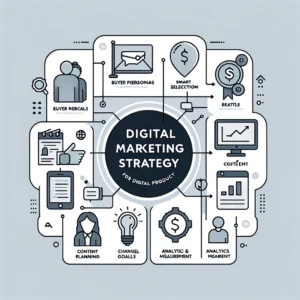In the rapidly evolving landscape of global business, the quest for growth execution model is unending. Companies of all sizes strive not just to expand but to do so sustainably and efficiently. Enter the Growth Execution Model—an approach that combines strategic planning with actionable insights to turn growth from a mere ambition into a measurable reality.

What is in the article?
- Intruduction
- The Imperative of Growth Execution
- Core Principles of the Growth Execution Model
- Step-by-Step: Implementing the Growth Execution Model
- Real-World Examples: Growth Execution Model in Various Industries
- Measuring the Impact: KPIs and Metrics in Growth Execution Model
- Innovations in Growth: Adapting the Model for New Markets
- Troubleshooting Common Hurdles in Growth Execution
- Synergizing Growth Execution with Digital Transformation
- Leadership Perspectives: Interviews with Pioneers of Growth Execution Model
- Next Steps: Crafting Your Unique Growth Execution Model Strategy
- Conclusion: Embarking on Your Growth Execution Model Journey
Intruduction
This article delves into the essence of the Growth Execution Model, breaking down its core principles and offering a clear, step-by-step guide on its implementation. We navigate through the theories and bring you concrete, real-world examples from various industries where this model has been the catalyst for undeniable success.
Are you looking for a Groth Execution specialist? Klick here
From the agility of tech startups adapting to market changes to the scaling strategies of retail giants, the Growth Execution Model has proven its versatility. We’ll explore how manufacturing sectors achieve lean operations and continuous growth, and how service industries tailor their growth strategies around the customer experience.
As we unfold the chapters of this growth-centric saga, we’ll also discuss the key performance indicators and metrics that businesses use to measure the effectiveness of their growth strategies. Furthermore, we’ll touch upon the common challenges faced during execution and the innovative solutions that industry leaders have crafted.
Join us as we chart the course of growth execution, providing insights from thought leaders who have pioneered this approach, and outline the steps you can take to tailor a Growth Execution Model that resonates with your business ethos. By the end of this journey, you’ll be equipped not only with knowledge but with a roadmap that leads to growth execution mastery.
The Imperative of Growth Execution
In today’s world, businesses must grow to survive. Growth is not just about getting bigger; it’s about getting better—better at meeting customer needs, better at adapting, and better at making a profit. Here’s why growth execution is so crucial:
- It’s competitive out there: If you’re not moving forward, you’re falling behind. In every industry, companies are vying for the top spot, and growth is the key to getting there.
- Customers expect more: Today’s customers want the best, and they want it now. To keep up, you need to grow in a way that meets these rising demands.
- Technology is changing the game: With new tools and data, we can grow smarter and faster. But only if we use them right. Embracing technology is a must.
- Efficiency is essential: It’s not just about size; it’s about being lean and productive. Growth execution helps us cut waste and streamline operations.
Remember, growth is a journey, not a destination. It’s about constant improvement and execution. That’s why this model is not just important; it’s imperative.
Core Principles of the Growth Execution Model
At the heart of the Growth Execution Model are key principles that act as the foundation for any company’s expansion efforts. These principles guide the way to sustainable and profitable growth:
- Clear Goals: Set specific, achievable targets. Know where you want to go.
- Customer Focus: Always keep the customer’s needs at the forefront. Their satisfaction is your growth.
- Adaptability: Be ready to change course if needed. The market won’t wait for you.
- Data-Driven Decisions: Use facts and figures, not just gut feelings. Let data lead the way.
- Continuous Learning: Keep learning from both successes and failures. Growth comes from knowledge.
- Collaboration: Work together as a team. Great ideas come from everywhere.
By sticking to these core principles, a business can navigate the complexities of growth with confidence. Remember, growth is a process that combines careful planning with the flexibility to adapt to new information and circumstances.
Step-by-Step: Implementing the Growth Execution Model
Bringing the Growth Execution Model into play is a strategic journey with steps that build on each other:
- Define Your Vision: Start with a clear picture of what you want to achieve. This vision guides every step.
- Set Measurable Goals: Break down your vision into goals that you can track. If you can measure it, you can manage it.
- Analyze Your Current Position: Understand where you stand in the market and what resources you have. Knowing your starting point is key.
- Plan Your Path: Create a roadmap of how to get from where you are to where you want to be. Each step should be clear and actionable.
- Execute with Precision: Put your plan into action with focus and determination. Regular check-ins keep you on track.
- Monitor Progress: Use data to watch how well you’re doing. Adjust as needed—flexibility is crucial.
- Celebrate Successes and Learn from Setbacks: Take time to acknowledge what’s working and understand what isn’t. Every outcome is a learning opportunity.
Remember, consistency is your ally in implementing the Growth Execution Model. It’s about making steady progress toward your goals, with each step informed by the last.
Real-World Examples: Growth Execution Model in Various Industries
Seeing the Growth Execution Model in action can clarify its impact. Here’s how different sectors apply it:
- Tech Startups: They grow by innovating fast. By releasing new features quickly, they meet customer needs and stay ahead of the competition.
- Retail Giants: These companies grow by scaling up. They open new stores and expand online to reach more customers.
- Manufacturing: Firms focus on cutting costs and boosting efficiency. They invest in automation to make more products at lower costs.
- Service Providers: They grow by enhancing customer service. Offering better support leads to more satisfied customers and more referrals.
Each industry uses the Growth Execution Model to capitalize on its strengths and address its challenges. The key is to apply the model in a way that fits your unique industry and company goals.
Retail Giants: Scaling with Precision
Large retail businesses expand their reach with careful planning and attention to detail:
- Know Your Market: They research where new stores will flourish. Location is everything.
- Invest in Logistics: Having a solid system to move products is crucial. Efficient logistics mean happy customers.
- Embrace Technology: They use tech to track inventory and sales. The right software makes scaling smoother.
- Train Your People: Staff are the face of the company. Well-trained employees create a consistent customer experience.
- Maintain Quality: As they grow, they keep their product quality high. Quality keeps customers coming back.
For retail giants, precision in scaling is not just about getting bigger, it’s about maintaining a standard of excellence. Every new store is a new opportunity to showcase their commitment to their customers.
Manufacturing Sector: Lean and Continuous Growth
The manufacturing industry focuses on becoming more efficient to achieve growth:
- Streamline Processes: They eliminate waste in production to save time and money.
- Adopt Lean Principles: Manufacturers optimize workflow to produce more with less.
- Invest in Automation: By using robots and machines, they increase output and consistency.
- Continuous Improvement: They constantly look for ways to get better, no matter how small. Every little bit helps.
- Employee Engagement: Workers on the ground often have the best improvement ideas. Listening to them is key.
For manufacturers, lean growth is not just a strategy, it’s a mindset. Doing more with less not only cuts costs but also drives innovation and competitiveness.
Service Industries: Customer-Centric Growth Execution Model
In service industries, growth revolves around the customer experience:
- Listen to Feedback: They pay close attention to what customers say. Customer feedback shapes services.
- Personalize the Experience: By tailoring services to individual needs, they make every customer feel special.
- Train for Excellence: Employees are trained to provide outstanding service—happy employees lead to happy customers.
- Embrace Convenience: They make it easy for customers to use their services. Convenience keeps customers coming back.
- Follow Up: After providing a service, they check in with customers to ensure satisfaction. Follow-ups can turn a one-time user into a regular.
For service providers, growth is about creating an environment where customers feel valued and respected. A happy customer is the best business strategy of all.
Measuring the Impact: KPIs and Metrics in Growth Execution Model
To see how well the Growth Execution Model works, businesses track specific indicators:
- Revenue Growth: They look at how much sales are increasing. Money coming in is a clear success sign.
- Customer Acquisition Cost: It’s key to know how much it costs to gain a new customer. Lower costs mean smarter growth.
- Customer Retention Rates: They track how many customers keep coming back. Repeat customers mean you’re doing something right.
- Net Promoter Score (NPS): This measures customer loyalty. A high NPS suggests customers will recommend you.
- Operational Efficiency: They measure how well their business runs. Doing more with less shows a lean operation.
For example, popular KPIs include Annual Recurring Revenue (ARR) for subscription models or Employee Satisfaction Scores for internal health. By keeping an eye on these metrics, companies can judge the effectiveness of their growth strategies and make informed decisions. Good numbers mean growth is on track.
Innovations in Growth: Adapting the Model for New Markets
When companies enter new markets, they tweak their growth models to fit:
- Research is Key: They learn everything about the new market before jumping in.
- Customize Offerings: Products or services are often changed to match local tastes.
- Build Relationships: They connect with local partners to understand the culture and gain trust.
- Stay Flexible: Ready to adapt quickly if something isn’t working.
- Use Local Insights: They rely on local teams’ knowledge to make smart moves.
By customizing their approach for each new market, businesses can avoid costly mistakes and gain a foothold faster. It’s about being locally smart while thinking globally. Innovation isn’t just a buzzword; it’s a survival strategy in new markets.
Troubleshooting Common Hurdles in Growth Execution
Every growth journey has its bumps. Here’s how to handle common challenges:
- Plan for Problems: Assume things will go wrong and have a backup plan ready.
- Stay on Budget: Keep a close eye on spending. Overspending can derail growth.
- Keep Teams Aligned: Make sure everyone is on the same page. Miscommunication can cause big setbacks.
- Be Patient: Growth takes time. Rushing can lead to mistakes.
- Learn Constantly: When something doesn’t work, figure out why and use that knowledge to improve.
By being proactive and learning from each issue, companies can keep their growth on track. Every problem is a chance to get stronger.
Synergizing Growth Execution with Digital Transformation
Merging growth plans with digital tech can supercharge a company’s expansion:
- Embrace Digital Tools: Use technology to make work faster and smarter.
- Upgrade Your Data Game: Collect and analyze data to understand your market better.
- Automate What You Can: Let machines handle routine tasks. Free your people to focus on growth.
- Stay Secure: As you grow digitally, keep your online defenses strong to protect your business.
- Train Your Team: Ensure everyone knows how to use new digital tools. Good training means a smoother transition.
By combining growth efforts with digital advancements, companies can reach new heights more efficiently. Digital transformation isn’t just an option; it’s part of the growth journey.
Leadership Perspectives: Interviews with Pioneers of Growth Execution Model
Hearing from those who’ve led successful growth can provide invaluable insights:
- Visionary Thinking: Top leaders share how clear goals set the stage for growth.
- Embracing Change: They stress the importance of being ready to pivot when necessary.
- Learning from Failure: Even the best have setbacks. Smart leaders use these as lessons.
- Culture of Innovation: Creating an environment where new ideas are welcomed and tested is crucial.
- Collaborative Environment: They emphasize teamwork across all levels as a growth driver.
Through these interviews, pioneers of growth execution offer a roadmap filled with practical advice and proven strategies for aspiring growth leaders.
Next Steps: Crafting Your Unique Growth Execution Model Strategy
After learning the fundamentals, it’s time to create a growth plan that’s tailored for your business:
- Assess Your Business: Look closely at your company and identify what sets you apart.
- Define Clear Objectives: Decide on specific, realistic targets that align with your vision.
- Gather Your Team: Get the right people involved who share your commitment to growth.
- Develop a Plan: Break down your objectives into manageable actions with deadlines.
- Execute and Monitor: Put your plan into action and keep an eye on progress, making changes when needed.
- Review and Refine: Regularly review the results and tweak your strategy for better outcomes.
Your growth execution strategy should be a living document, evolving as your business and the market change. With each step forward, you’re building a stronger, more resilient business.
Conclusion: Embarking on Your Growth Execution Model Journey
As you set out on your path to growth, remember these key takeaways:
- Start With Clarity: Know exactly what you want to achieve. A clear goal is your compass.
- Plan Thoroughly: Prepare a detailed roadmap. Good planning is half the battle.
- Execute Diligently: Take action and stay focused. Consistent efforts lead to results.
- Measure Progress: Keep track of how you’re doing. What gets measured gets managed.
- Adapt and Overcome: Be ready to change tactics. Flexibility is crucial in the face of challenges.
- Celebrate Every Win: Recognize every success along the way. Celebration boosts morale.
Your journey to growth is unique to your business, but the principles of the Growth Execution Model hold true for all. Embrace the journey, learn from each step, and watch your business climb to new heights.



